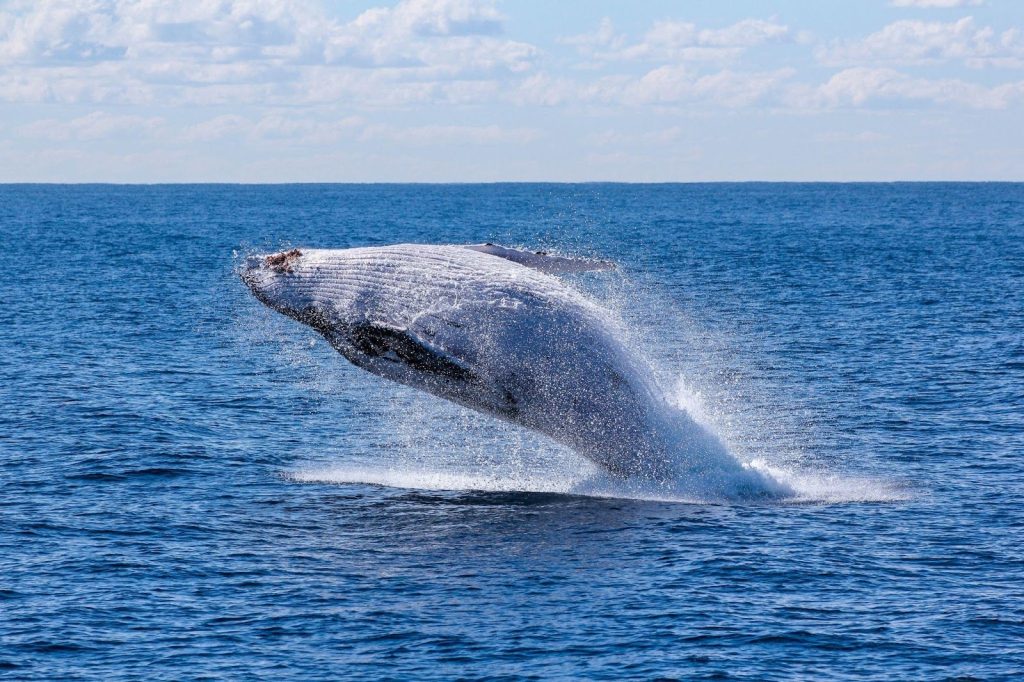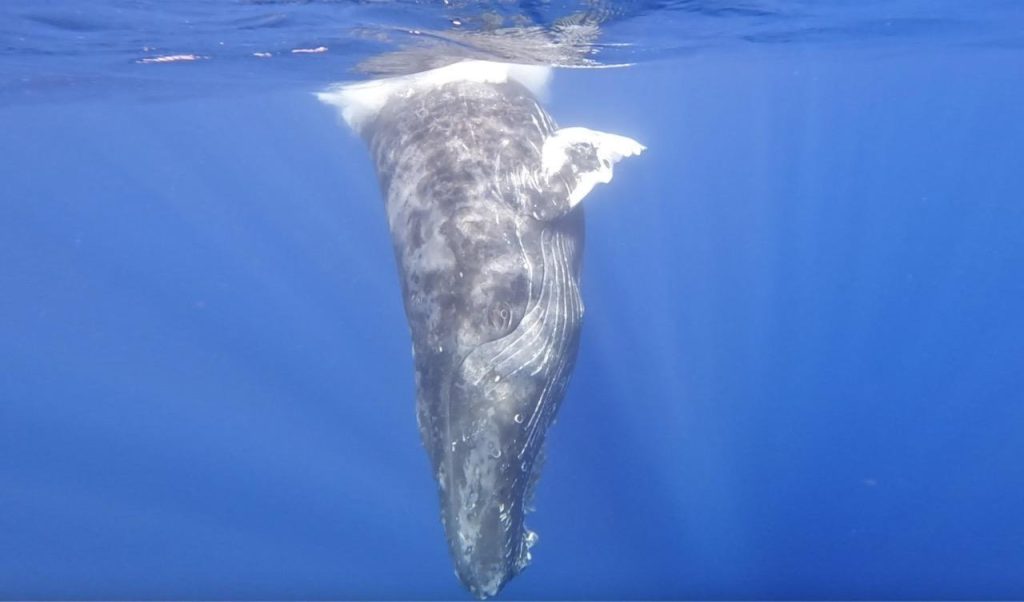Is January the best month to see humpback whales in their natural habitat?
Each year, travellers come to Hawaii hoping to see whales up close.
January is a special month because it falls right in the middle of peak whale season.
The waters around Waikiki become a gathering place for humpback whales, making it one of the best locations to view them up close.
If you are wondering where the best whale watching is in January, Waikiki often stands at the top of the list.
But why is this spot so ideal, and what makes January so significant? Let’s break it down step by step.
Why Humpback Whales Choose Hawaii’s Waters

Every year, humpback whales travel nearly 6,000 miles from the cold waters of Alaska to Hawaii, making this one of the longest migrations of any mammal on Earth. But what draws these massive creatures to Hawaiian waters specifically?
The answer lies in what Hawaii offers that Alaska doesn’t during the winter months. The warm, shallow waters around the Hawaiian Islands provide perfect conditions for humpback whales to mate, give birth, and raise their young.
Unlike the frigid Alaskan waters where they spend their summers feeding, Hawaii’s temperate ocean temperatures create an ideal nursery for newborn calves who haven’t yet developed the thick blubber layer needed for colder climates.
Scientists believe that up to 12,000 whales, more than half of the North Pacific humpback population, return to Hawaiian waters from November through May. This massive congregation makes Hawaii one of the most reliable places on the planet to spot these magnificent marine mammals.
January: Peak Season for Whale Activity
While humpback whales start arriving in Hawaiian waters as early as November, January marks a special time in their annual cycle. Peak sightings occur in January and February, when the largest concentration of whales has gathered in Hawaii’s coastal areas.
What makes January so special? By this point in the season, early arrivals have already given birth, meaning the waters are filled with mothers nursing their calves.
Male whales are actively competing for female attention, leading to dramatic displays of strength and agility. The combination of breeding behaviors, newborn calves, and the sheer number of whales present creates unparalleled viewing opportunities.
The question many visitors ask is: where is the best whale watching in January? While several locations throughout Hawaii offer excellent viewing, Waikiki stands out for several compelling reasons that we’ll explore throughout this article.
Why Waikiki Stands Out
So, where is the best whale watching in January? Waikiki is consistently highlighted because of several unique advantages.
- Waikiki sits along the southern shore of Oahu, offering calm waters and wide views of the Pacific.
- The area has a high concentration of boat tours dedicated to whale watching, making it accessible for visitors.
- The location allows for frequent sightings since whales often pass close to shore.
These factors combine to make Waikiki a top choice during the peak season.
For a memorable experience, explore our Waikiki whale watching tours that bring you close to these majestic creatures.
Waikiki’s Strategic Location
Waikiki isn’t just famous for its beaches and hotels. Its position on Oahu’s southern shore places it in direct proximity to key whale habitats. The waters off Waikiki are part of the Hawaiian Islands Humpback Whale National Marine Sanctuary, a protected area specifically designated to safeguard these animals and their environment.
The depth and temperature of the ocean around Waikiki create perfect conditions for whale activity. These waters are shallow enough to be comfortable for nursing mothers and their calves, yet deep enough to accommodate the whales’ various behaviors. When you book a tour from Waikiki, you’re often just minutes away from prime viewing areas.
Observable Whale Behaviors in January

One of the most thrilling aspects of whale watching in January is the variety of behaviors you might witness. Humpback whales are incredibly active during this period, and their size makes even distant sightings spectacular.
Breaching is perhaps the most dramatic behavior. A full-grown humpback whale can weigh 40 tons, and watching one launch its entire body out of the water defies imagination. Scientists aren’t entirely sure why whales breach, but theories include communication, parasite removal, and simple play.
Tail slapping is another common sight. Whales lift their massive tail flukes out of the water and slam them down repeatedly. This behavior can be seen from miles away and often indicates whales are communicating with each other or asserting dominance.
Males engage in complex behaviors, including chasing, vocal displays, horizontal tail thrashing, and rear body thrashing. These competitive displays happen when multiple males pursue a single female, creating what researchers call a “competitive pod.” The resulting action can be intense, with whales jostling for position and demonstrating their strength.
To witness these behaviors firsthand, join a guided sunset cruise in Waikiki where whales are often spotted during the golden hour.
Pec slapping involves whales lying on their sides and slapping the water with their long pectoral fins. These fins can measure up to 15 feet long, and the sound of them hitting the water carries far across the ocean.
The Unique Experience of Whale Song
Male humpback whales sing complex songs that can last up to 20 minutes and be heard underwater from miles away. While you won’t hear these songs clearly from the surface, many tour boats have hydrophones (underwater microphones) that allow passengers to listen to these haunting melodies.
These songs aren’t random. They follow specific patterns and structures, and all males in a population sing variations of the same song, which changes gradually over time. The purpose isn’t fully understood, but scientists believe it’s related to mating, possibly serving to attract females or establish male dominance.
Accessibility of Tours in Waikiki
Waikiki is known for being easy to access. This extends to whale watching tours as well.
- There are multiple operators offering dedicated whale watching experiences.
- Tours depart from convenient locations near popular hotels and resorts.
- Options range in timing, from short trips to extended outings.
This level of accessibility makes Waikiki a go-to answer when someone asks where the best whale watching is in January.
Check out more about our eco-friendly options through our snorkeling tours, which can sometimes combine with whale sightings in season.
Make Your Whale Watching in Waikiki Truly Private
At Hawaii Ocean Charters, every whale watching trip is designed just for your group. No crowds, no distractions; just your own private boat, expert crew, and the freedom to enjoy the ocean at your pace. January is peak season, which means the best chances of seeing humpback whales in action. Book your private tour today and experience Waikiki’s whale watching in comfort, privacy, and style.

